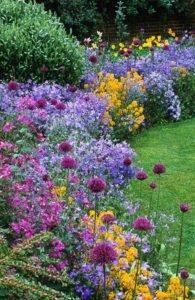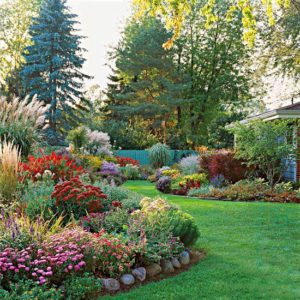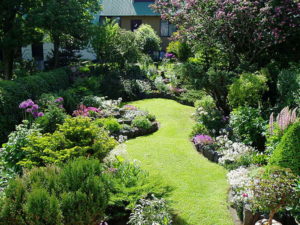
Selecting Plants for Your Garden
It’s time to make plans for sprucing up the garden. You might just need to tuck a few plants into garden gaps, or you might need to undertake a full-scale bed design project. Either way, there are plenty of tried-and-true rules to help ensure that your garden is healthy, beautiful and thriving for the whole growing season.
The first consideration is evaluating the conditions and microclimate of your bed. Evaluate the soil–is it sandy or clay? Loamy or silty? While it’s possible to amend soil and influence its characteristics to some degree, you’ll get the best results if you can work with what you’ve got and select plants suited to your conditions. Likewise, consider the microclimate: dry or wet, shady or sunny, these conditions will define which plants will thrive. Take note of features which influence temperature and moisture: a concrete path or brick wall will retain heat and warm up an area, a downspout or thick shade will cause extra dampness.
Choosing the right plant for the right spot is the number one consideration as you design your beds. If you can offer a plant nearly ideal growing conditions, it will grow quickly, develop a healthy root system, and be able to withstand disease and insects better. You want your plants to thrive, and matching them to conditions is the best strategy.

Next, open your eyes to the broad variety of plants you can choose from. It’s easy to dwell on flowers, but you want to include plants for texture, foliage and structure as well. Think about perennials, annuals, seasonal bulbs, ornamental grasses, shrubs and vines. Incorporating specimens from many or all of these categories gives you a rich catalog to choose from.
Consider the composition your plants will create. You’re looking for balance, contrast and variety. Conscientiously varying the shapes, heights and textures of your plants is essential to creating a pleasing look, whatever style of garden–cottage, modern, Asian–you prefer. Place periodic focal points in the garden. These can be larger plants boasting a particularly striking color or shape, or they can be inorganic features like birdbaths, pergolas or statues.
And then there’s color–perhaps the most obvious and fun feature of any garden. Make sure to express a variety of color in the foliage you select: blooms may last weeks or months, but foliage lasts the entire season. Some foliage is consistent throughout, while some changes in the fall for greater interest. Bicolored foliage, bright lime greens and deep reds all make a lively contribution. Make sure some plants offer foliage throughout the winter.

When choosing flower colors, restricting yourself to a color scheme keeps the garden from looking too busy. Planting clusters of colors and repeating them through the bed keeps the eye moving. For example, plant a mass of white next to a grouping of purple with spots of pink or yellow as highlights. When choosing flowering plants, remember to take note of the season when they bloom, so you can have color throughout the year.
As a finishing touch, include some plants which attract birds, bees, and butterflies. The extra dimension of flitting, flying creatures will contribute visual interest and a lovely sense of life to the garden while providing a beneficial habitat to these crucial critters.
